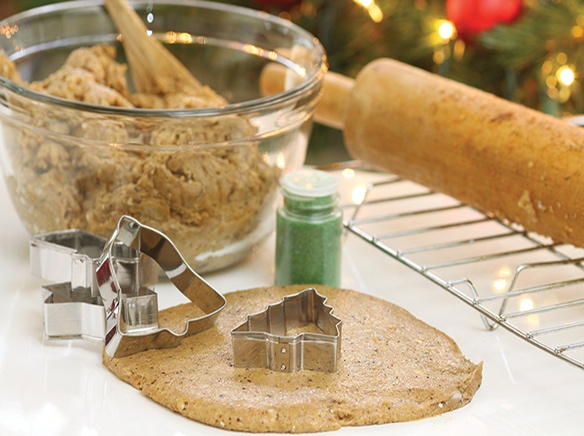Many holiday traditions begin with family and friends gathered in the kitchen or around the dinner table. Food is an integral part of celebrating Thanksgiving, Christmas and Chanukah, and key components of each holiday are tied exclusively to food.
Come the holiday season, many people gather to make delicious desserts for holiday dinners or even as gifts. The right ingredients are necessary to produce a bounty of baked goods. It’s also essential to ensure those ingredients are fresh, as age can compromise the taste of some spices, and leavening ingredients like yeast, baking soda and baking powder may lose efficacy over time.
- Flours: All-purpose flour is versatile and useful in many recipes. In addition, bread flour, cake flour and pastry flour have attributes that make them better suited for their respective jobs than all-purpose flour. Individuals who follow certain diets, including gluten-free diets, can find alternative flours that can be substituted in many different recipes.
- Baking soda: This leavening agent is activated when it is combined with acid and heat. That is why it is often paired with citrus juice, buttermilk and sour cream.
- Baking powder: This leavening agent is baking soda mixed with a powdered acid and cornstarch. If baking soda is the only leavening agent, it will not require the addition of another acidic ingredient. “Double-acting” means carbon dioxide bubbles will form during mixing and again during heating.
- Yeast: Yeast takes more time to metabolize and cause doughs to rise than other leavening agents.
- Sugar: Granulated sugar is the most common sugar found in recipes. Confectioner’s sugar (powdered sugar) is used in frosting and icings. Brown sugar is refined sugar with molasses added, and is used in certain recipes, like gingerbread.
- Salt: Granulated table salt is used in everyday baking.
- Unsalted butter: Unsalted butter will be the default for baked goods unless the recipe specifically mentions salted butter.
- Eggs: Eggs help to bind ingredients together. Large eggs are most often cited in many baking recipes.
- Milk: Dairy adds moisture and texture to batters. Alternative milks, such as soy or almond milk, can sometimes be substituted, but the resulting texture may change.
- Vegetable oil: Many recipes call for vegetable oil, which has a neutral flavor.
- Shortening: Shortening is a solid vegetable fat used to make tender baked goods. Shortening also has a higher melting point, which helps cookies and other items retain their shape while cooking.
- Flavorings: It is helpful to have various spices and extracts on hand. Cinnamon, ginger, nutmeg, cloves, and allspice are some common baking spices. Almond and vanilla extracts are quite versatile and add extra punch to recipes.
- Additions: Mix-ins, such as chocolate chips, cocoa powder, oats, nuts, and dried fruits, often turn up in holiday recipes.
Certain ingredients are essential for baking and holiday cooks can take steps to ensure their pantries are stocked in time for the holidays.











